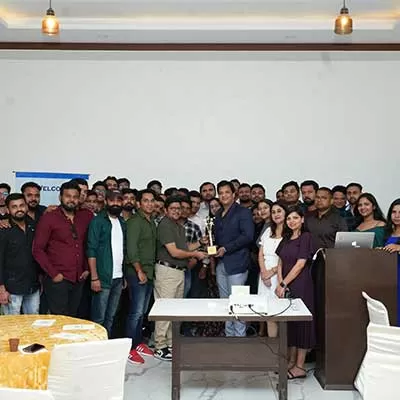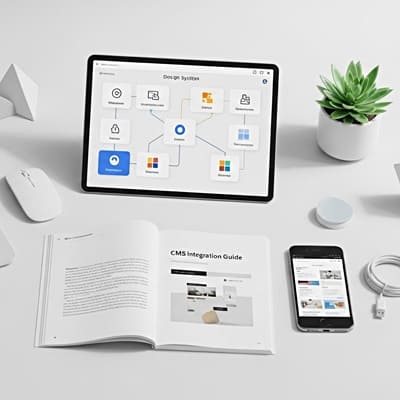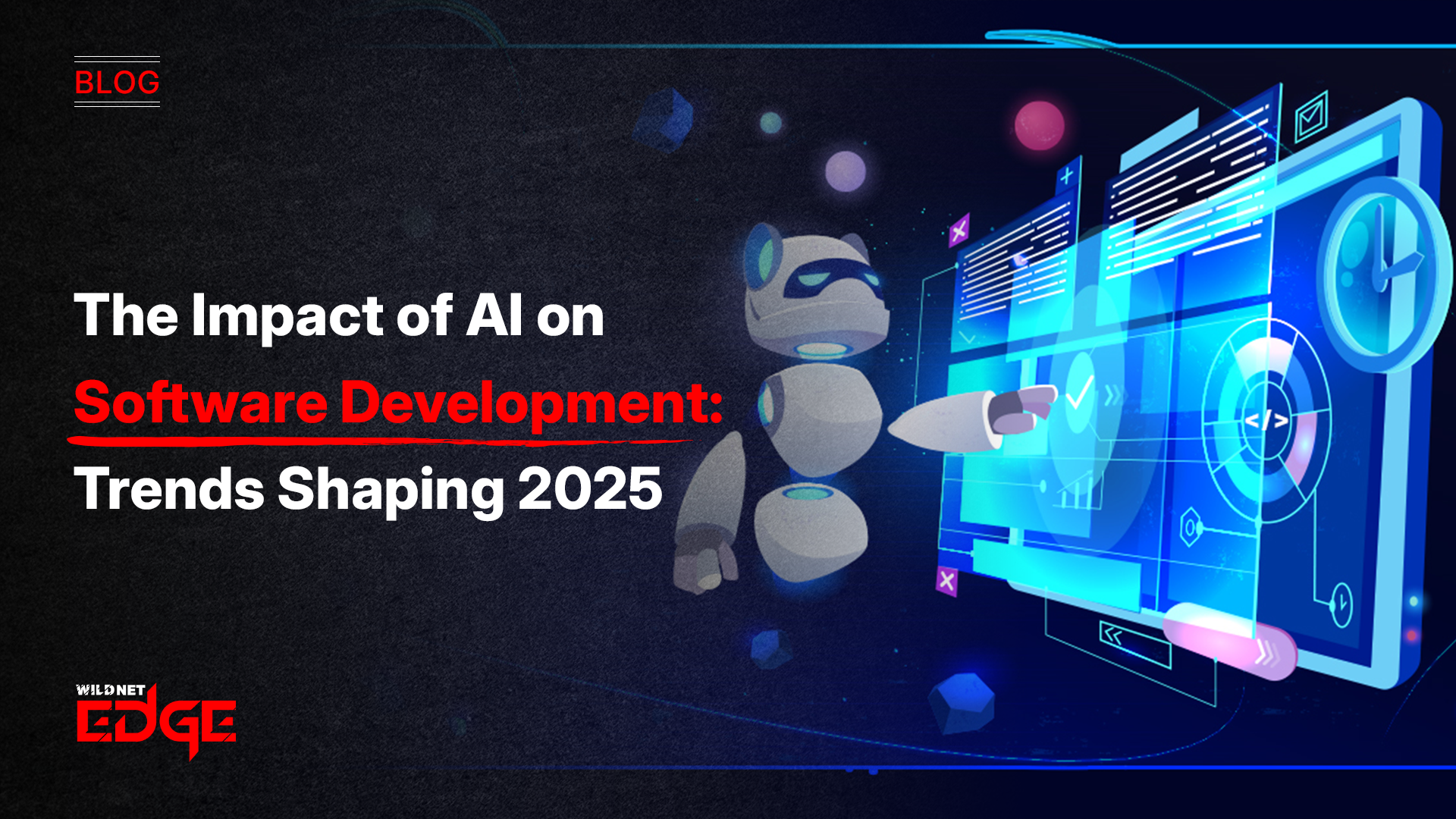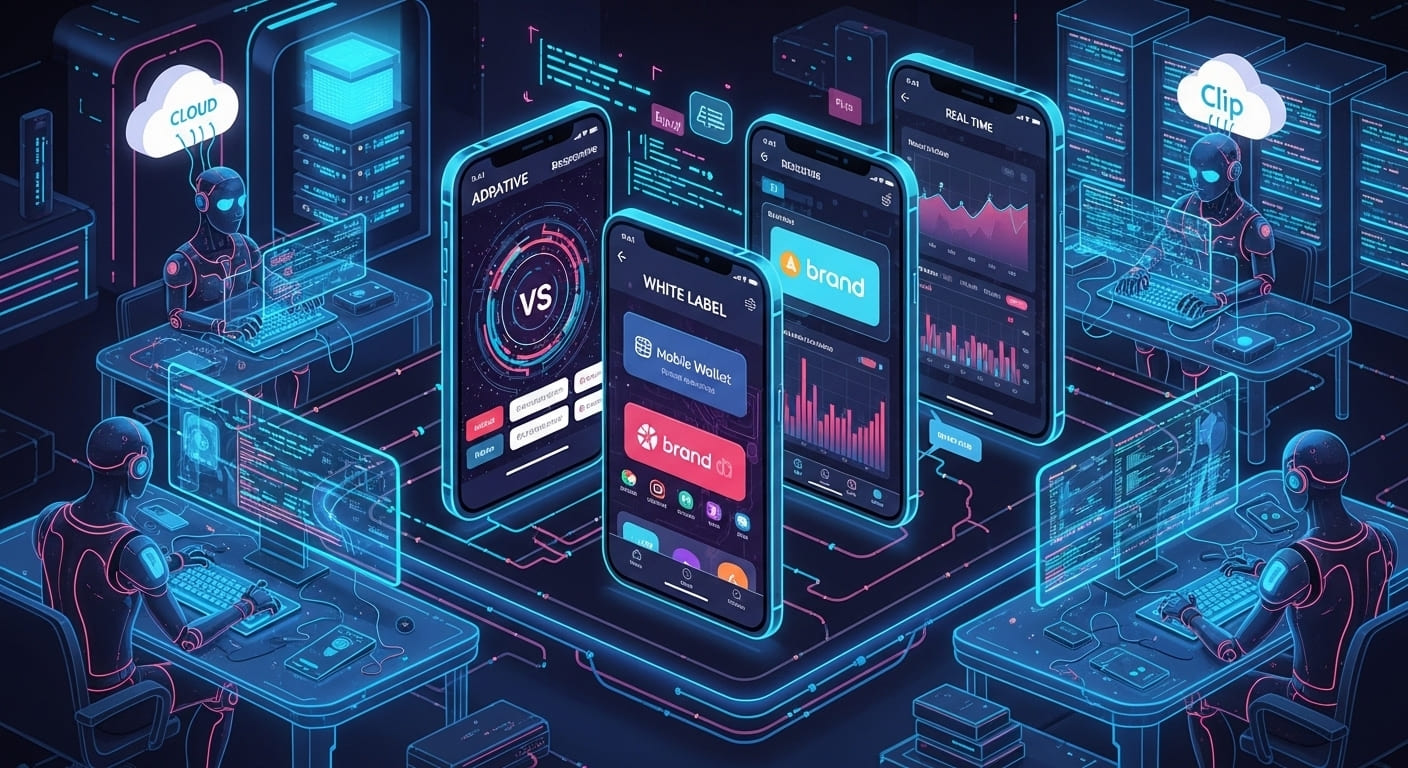Introduction:
AI in software development isn’t just transforming how we write code. It’s changing why, when, and even what we build. In 2025, AI is no longer a futuristic tool reserved for innovation labs. It’s embedded in everyday development workflows, automating mundane tasks, guiding architectural decisions, and accelerating delivery without compromising quality.
If you’re a product owner, a CTO, or even an ambitious startup founder, you’re not just trying to build faster, you’re trying to build smarter. And AI gives you that edge. But the real question isn’t “What can AI do?” It’s: “How should we leverage AI to solve real development problems?”
In this blog, I’ll walk you through the most impactful AI trends shaping software development in 2025. Not theoretical hype, practical, job-focused shifts that’ll define how we build software going forward.
How AI in Software Development Solves Real Problems Developers Face
Let’s face it: traditional development cycles are bloated. Deadlines slip. Technical debt piles up. Teams spend too much time on repetitive tasks and too little on innovation. That’s exactly where AI in software development shines. It doesn’t just add efficiency; it directly tackles the friction developers deal with every day.
Here’s how:
- Code Generation and Suggestions
AI-powered tools like GitHub Copilot or Amazon CodeWhisperer help developers write boilerplate code faster. But beyond autocomplete, they understand context, recommend logic, and reduce coding errors in real-time. - Bug Detection and Testing
AI doesn’t wait for bugs to happen. It predicts them based on previous commits, common logic flaws, or API misuse. Testing becomes proactive instead of reactive, with intelligent test case generation, coverage suggestions, and smart debugging. - Smarter DevOps and CI/CD
From forecasting deployment risks to recommending rollback strategies, AI in software development adds a decision layer to DevOps. It automates environment setup, infrastructure changes, and monitors app behavior post-deployment. - Project Management and Resource Forecasting
AI-powered analytics can now predict project overruns, optimize sprint planning, and even recommend how many engineers you need based on scope and velocity. - Enhanced Security
AI can continuously scan codebases for vulnerabilities, not just known issues, but also suspicious patterns and behaviors. Think of it as an always-on security auditor built into your pipeline.
In 2025, AI isn’t just making software development faster; it’s making it more resilient, adaptive, and aligned with business outcomes.
Key Trends Driving the Adoption of AI in Software Development in 2025
AI isn’t just a buzzword anymore; it’s shaping how software is built, shipped, and maintained. In 2025, several trends are converging to make AI a default part of the development stack, not just a fancy add-on.
Here’s what’s pushing AI deeper into the software lifecycle:
- Shift to AI-First SDLC
Traditional SDLCs are being replaced with AI-first development models where tools assist from ideation to deployment. This shift reduces time-to-market and increases agility across teams. - Widespread Use of AI Agents and Autonomous Coding Tools
Developers are increasingly relying on AI agents that can refactor legacy code, write unit tests, suggest architecture improvements, or even build microservices with minimal input. - Natural Language Programming
With large language models becoming more accurate, natural language interfaces are allowing product owners and non-technical stakeholders to “talk” features into existence. This bridges the gap between business and engineering like never before. - Predictive Analytics for SDLC
AI can now forecast project outcomes, identify bottlenecks in real time, and simulate deployment risks before code hits production, changing how engineering leaders plan and prioritize work. - Context-Aware Personalization
AI tools in 2025 understand your stack, project history, preferred patterns, and style guides. This level of personalization means suggestions are no longer generic. They’re tailored for your exact context. - Responsible AI and Ethical Coding Practices
As AI becomes more embedded, developers are paying more attention to AI ethics, bias mitigation, and explainability. AI is being used to help enforce responsible code practices as part of the workflow.
AI is no longer a future disruptor. It’s now a present-day partner in smarter, faster, and safer software development.
How AI in Software Development Improves Productivity and Code Quality
AI isn’t just about speed, it’s also about building better software with fewer bugs, cleaner architecture, and more intelligent automation.
Let’s break down how AI is raising the bar across the board:
- Faster Code Generation
AI copilots accelerate boilerplate coding and help you ship features quickly. Developers can focus on architecture and logic while AI handles the repetitive parts. - Improved Code Quality Through Smart Reviews
AI-driven code review tools catch potential issues like security flaws, deprecated syntax, or unoptimized patterns before a human ever reads the code. - Automated Testing at Scale
AI writes unit, integration, and regression tests based on user stories or even production behavior. This reduces manual QA effort and increases test coverage dramatically. - Continuous Learning from Past Bugs
AI learns from historical bug patterns and alerts devs when similar ones start to creep into new features, basically like a memory bank for quality control. - Smarter DevOps and Deployment
From predicting server load to optimizing CI/CD pipelines, AI takes the guesswork out of operations and ensures releases are smooth and stable.
In short, AI is turning development teams into high-performance units, not by replacing developers, but by removing the friction in their day-to-day flow.
Key Trends Driving AI in Software Development in 2025
In 2025, a few trends are dominating how teams adopt and integrate AI into their workflows:
- AI-First SDLC Is Going Mainstream
Software Development Life Cycle (SDLC) models are now being designed with AI baked in from the start. From planning to deployment, AI tools are part of every stage This isn’t an add-on, it’s foundational. - AI Pair Programming Becomes the Norm
Tools like GitHub Copilot and ChatGPT are no longer assistants; they’re collaborators. Developers are coding with AI, not just using it for suggestions. - Natural Language to Code Is Taking Off
Prompt-based development is rising. Teams now prototype full-stack apps by describing functionality in plain English. It’s redefining who can contribute to product creation. - AI in Testing Is Evolving Beyond Automation
Instead of just automating test cases, AI predicts failure scenarios, analyzes edge cases, and adapts to real user behavior—making testing dynamic, not static. - Hyper-Personalized Developer Experience
Developers are getting tools that learn how they code, what they prefer, and where they need support, creating a customized, high-efficiency workflow. - Responsible AI and Governance Are in Focus
As AI writes more code, ethics, bias detection, and regulatory compliance have become critical. 2025 dev teams are as focused on how AI is used as where.
This landscape is moving fast, and those not evolving risk falling behind the curve.
Benefits of AI in Software Development Teams
When used right, AI in software development becomes a powerful enabler across the board. Here’s how teams are benefiting in 2025:
- Accelerated Development Cycles
AI speeds up everything—from generating boilerplate code to writing unit tests and documentation. What once took weeks can now be done in days. - Higher Code Quality, Fewer Bugs
AI tools can flag issues, suggest optimizations, and predict bugs before they hit production. This means fewer late-night fire drills and happier users. - Better Decision-Making
Whether it’s picking the right architecture or estimating timelines, AI helps teams make data-backed choices instead of gut calls. - Smarter Resource Allocation
AI analyzes team velocity, backlog health, and workload patterns to help managers plan smarter and reduce burnout. - Enhanced Collaboration
With natural language interfaces, even non-tech stakeholders can contribute to feature planning, user flows, and bug triaging—making software development more inclusive. - Continuous Learning and Feedback Loops
AI doesn’t just ship code. It learns from each deployment and user interaction, feeding insights back into the system to improve the next version.
In short, teams that embrace AI aren’t just faster; they’re smarter, more resilient, and better aligned with real-world user needs.
The Future of AI in Software Development: What’s Next?
If we look at the future of AI in software development is laying the groundwork for a new development paradigm. As we move further into 2025, I see AI becoming less of an assistant and more of a collaborator in the dev process.
We’re already seeing the rise of autonomous coding agents that don’t just suggest lines of code but handle entire feature development, from ideation to integration. These agents will become increasingly domain-specific, fine-tuned to industries like fintech, healthcare, and logistics, allowing for faster and more compliant builds.
Explainable AI will also become crucial. As AI takes on more decision-making responsibilities, developers and product owners will demand transparency around how those decisions are made. We can’t afford black-box systems when compliance and trust are on the line.
Finally, I expect AI tools to push beyond traditional development environments. With AI-first SDLCs (Software Development Lifecycles), teams will restructure their workflows to revolve around machine collaboration, leading to more agile, continuous, and intelligent product releases.
The shift is clear: AI won’t just improve how we build software. It will fundamentally reshape what we build, how we collaborate, and what it means to ship faster, smarter, and more responsibly.
Ready to Build Smarter? We’re an AI-First Software Partner
If you’re thinking, “This all sounds great, but where do I begin?”, that’s exactly where we come in.
At WildnetEdge, we’ve fully embraced AI in software development as a core principle. Our AI-first approach isn’t just a buzzword. It means we use intelligent agents, automation frameworks, and machine-led architecture planning to speed up your dev cycles, cut down rework, and deliver future-ready software faster.
Whether you’re modernizing legacy systems, launching a new SaaS product, or exploring generative AI integration, we help you build software that’s as intelligent as the people using it.
Let’s not just catch up to the future. Let’s build it, together.
FAQs
1. How is AI used in software development?
AI is used in software development to automate repetitive tasks, generate code, identify bugs early, improve software testing, and optimize development workflows through intelligent recommendations and predictions.
2. What are the benefits of using AI in software development?
AI speeds up development cycles, improves code quality, reduces manual effort, enables smarter decision-making, and helps build more adaptive and scalable applications.
3. Will AI replace software developers in the future?
AI is not replacing developers, but it is transforming their roles. Developers will focus more on high-level problem-solving, architecture, and decision-making, while AI handles routine coding and optimization tasks.
4. What is the role of AI in modern software testing?
AI enhances software testing by automating test case generation, detecting edge cases, predicting failure points, and improving test coverage, reducing the risk of bugs in production.
5. Can AI be integrated into legacy software systems?
Yes, AI can be integrated into legacy systems through APIs, machine learning models, and microservices that enhance existing functionality without requiring a complete overhaul.
6. How does an AI-first approach help software development companies?
An AI-first approach helps companies reduce time-to-market, increase development efficiency, personalize user experiences, and stay ahead of rapidly evolving technology trends.

Nitin Agarwal is a veteran in custom software development. He is fascinated by how software can turn ideas into real-world solutions. With extensive experience designing scalable and efficient systems, he focuses on creating software that delivers tangible results. Nitin enjoys exploring emerging technologies, taking on challenging projects, and mentoring teams to bring ideas to life. He believes that good software is not just about code; it’s about understanding problems and creating value for users. For him, great software combines thoughtful design, clever engineering, and a clear understanding of the problems it’s meant to solve.
 sales@wildnetedge.com
sales@wildnetedge.com +1 (212) 901 8616
+1 (212) 901 8616 +1 (437) 225-7733
+1 (437) 225-7733































